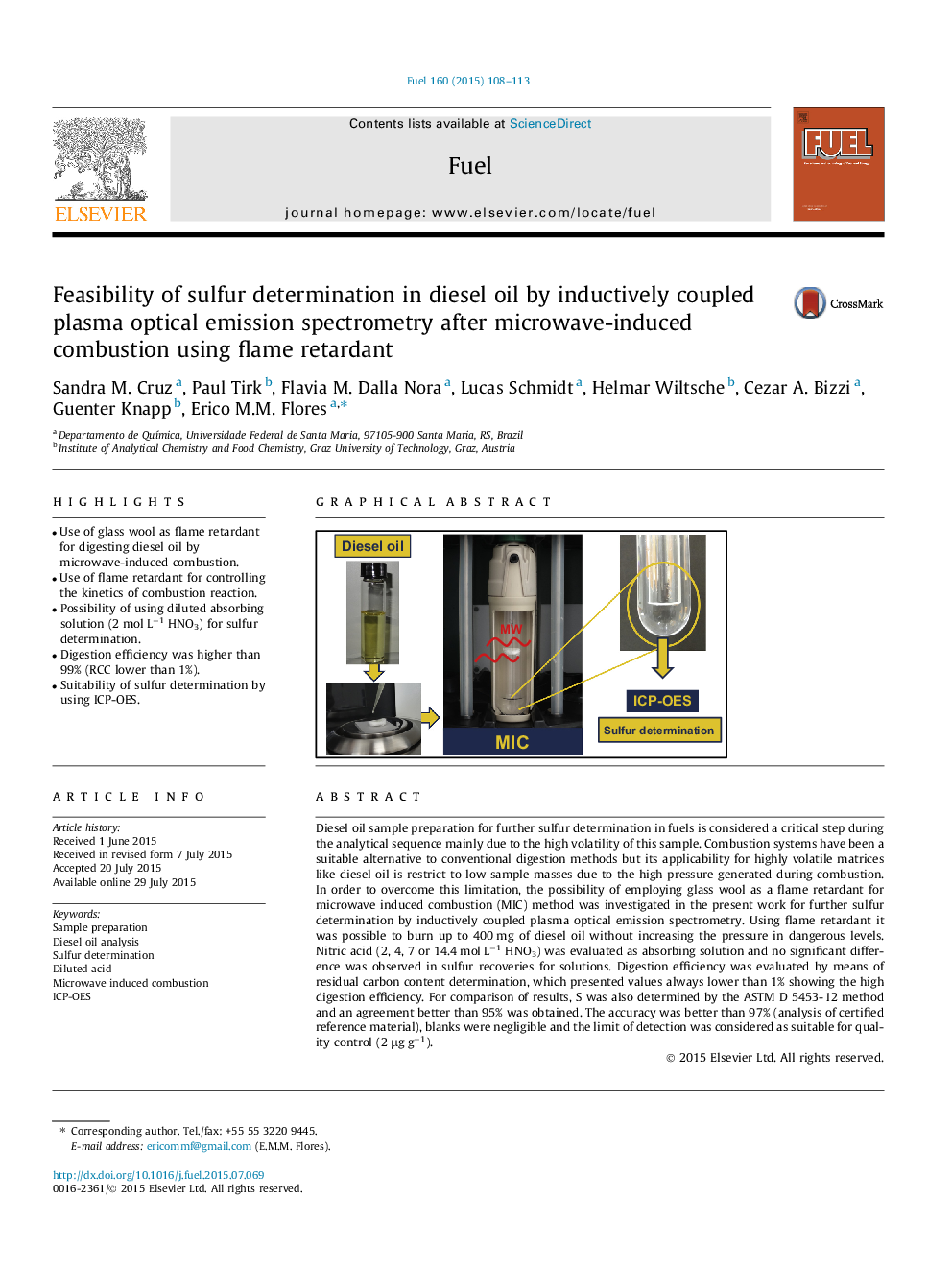| Article ID | Journal | Published Year | Pages | File Type |
|---|---|---|---|---|
| 205532 | Fuel | 2015 | 6 Pages |
•Use of glass wool as flame retardant for digesting diesel oil by microwave-induced combustion.•Use of flame retardant for controlling the kinetics of combustion reaction.•Possibility of using diluted absorbing solution (2 mol L−1 HNO3) for sulfur determination.•Digestion efficiency was higher than 99% (RCC lower than 1%).•Suitability of sulfur determination by using ICP-OES.
Diesel oil sample preparation for further sulfur determination in fuels is considered a critical step during the analytical sequence mainly due to the high volatility of this sample. Combustion systems have been a suitable alternative to conventional digestion methods but its applicability for highly volatile matrices like diesel oil is restrict to low sample masses due to the high pressure generated during combustion. In order to overcome this limitation, the possibility of employing glass wool as a flame retardant for microwave induced combustion (MIC) method was investigated in the present work for further sulfur determination by inductively coupled plasma optical emission spectrometry. Using flame retardant it was possible to burn up to 400 mg of diesel oil without increasing the pressure in dangerous levels. Nitric acid (2, 4, 7 or 14.4 mol L−1 HNO3) was evaluated as absorbing solution and no significant difference was observed in sulfur recoveries for solutions. Digestion efficiency was evaluated by means of residual carbon content determination, which presented values always lower than 1% showing the high digestion efficiency. For comparison of results, S was also determined by the ASTM D 5453-12 method and an agreement better than 95% was obtained. The accuracy was better than 97% (analysis of certified reference material), blanks were negligible and the limit of detection was considered as suitable for quality control (2 μg g−1).
Graphical abstractFigure optionsDownload full-size imageDownload as PowerPoint slide
